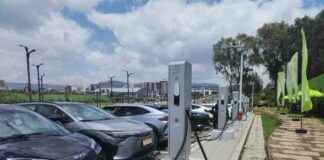Chicago City Buildings Transition to Renewable Energy Sources
Chicago, Illinois is making headlines as it starts off the New Year with a significant step towards sustainability. All 411 of the city’s municipal buildings, including iconic landmarks like its international airports, fire stations, libraries, and City Hall, have officially transitioned to being powered entirely by renewable energy as of January 1.
Achieving Clean Energy Milestones
This impressive feat was made possible through a 5-year power purchase agreement (PPA) with Constellation, a deal inked back in August 2022. The move marks a pivotal moment in Chicago’s environmental efforts, setting a new standard for clean energy practices in urban settings.
Angela Tovar, the chief sustainability officer for Chicago, expressed her excitement over this milestone, emphasizing the impact it will have on all Chicagoans who interact with city-owned buildings on a daily basis. From cultural centers to libraries and international airports, the transition to renewable energy sources is a significant win for both residents and the environment.
The Power of Solar Farms
The majority of the municipal buildings’ power demand, a whopping 70%, is now met through the Double Black Diamond solar farm. Spanning over 4,100 acres in Sangamon and Morgan counties, this solar farm, developed and operated by Swift Current Energy, represents the largest of its kind east of the Mississippi River. The farm not only delivers clean energy to the city but also provides economic opportunities for the region.
Addressing Concerns and Setting Goals
While the move to renewable energy sources is expected to reduce Chicago’s carbon emissions significantly, concerns have been raised about the use of renewable energy credits (RECs) in the plan. Critics argue that RECs may not directly contribute to local clean energy generation, leading to accusations of greenwashing.
However, city officials have reassured the public that the inclusion of RECs is a stepping stone towards fostering more renewable energy development locally. Deputy Chief Sustainability Officer Jared Policicchio emphasized that the city’s ultimate goal is to move away from relying on RECs in the future, with plans to explore solar installations on local buildings.
Chicago’s commitment to sustainability doesn’t stop at municipal buildings. The city aims to power all buildings, not just public ones, through renewables by 2035, setting a bold example for urban centers across the country.
As Chicago paves the way for a greener future, residents and visitors alike can witness the positive impact of clean energy initiatives on a large scale. From reducing carbon emissions to creating opportunities for local communities, the city’s transition to renewable power sources is a testament to its commitment to environmental stewardship.














